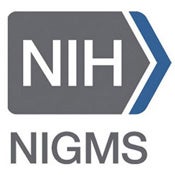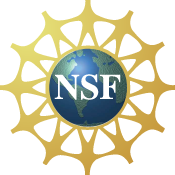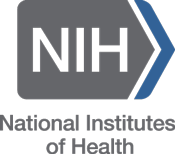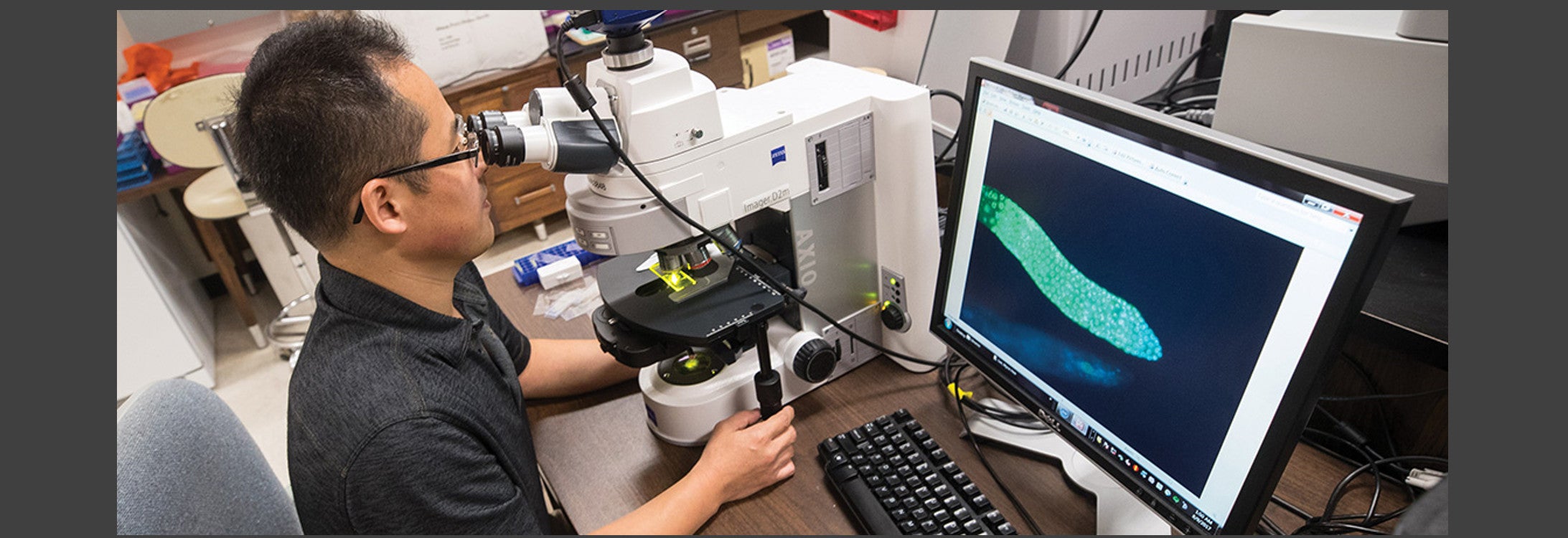Myon-Hee Lee, PhD, Research
Current Research
Stem cell controls and Cell fate reprogramming
Stem cells have the ability to reproduce (i.e. self-renewal) and to give rise to specialized cells (i.e. differentiation). Adult stem cells function as a reservoir for the replenishment of normal tissues and repair of damaged tissues. It is clear that genetic networks control the balance between self-renewal and differentiation, and that misregulation of these networks can result in overproliferation of adult stem cells and cancer. For several years, a increasing evidence supports the theory of cancer stem cells (CSCs) that tumor cells are heterogeneous containing rare tumor initiating cells (called by CSCs) and abundant non-tumor initiating cells. Furthermore, it has been proven that CSCs are similar to the stem cells in many aspects and exist in multiple cancer cells such as acute and chronic myeloid leukemia, breast cancer, and lung cancer. Therefore, specific therapies targeted at CSCs must be considered to increase the efficiency and safety of cancer treatment.
The long-term objective of my laboratory is to unravel molecular mechanisms of cell fate reprogramming in vivo. Specifically, we focus on how stem cell regulators and small molecules control cell fate reprogramming in vivo and extend it by application of our findings to cancer stem cells (CSCs). We use the nematode Caenorhabditis elegans ( C. elegans) as a model system to study in vivo cell fate reprogramming. In C. elegans, germline stem cells (GSCs) persist throughout adulthood and replenish the germline with thousands of differentiated gametes. Importantly, a core network of conserved genes controls the balance between GSC renewal and differentiation. More importantly, some of conserved RNA regulators (e.g. STAR/KH domain protein GLD-1) have been implicated in the regulation of stem cell (or CSC) self-renewal and cell fate reprogramming in the C. elegans germ line. Therefore, C. elegans germline provides an attractive system for studying the reprogramming of CSCs.
Our research plans include:
(1) a focused analysis of the molecular mechanism of in vivo cell fate reprogramming, particularly dedifferentiation and transdifferentiation;
(2) Identification and characterization of genetic regulators that contribute to reprogramming of stem cells (or CSCs) using a genetic/RNAi based-screening approach;
(3) High-throughput screening of small molecules that induce cell fate reprogramming in C. elegans; (4) and the application of small molecule reprogramming in human disease models (e.g. leukemia).
Notably, the C. elegans signaling pathways and genetic factors we plan to investigate are conserved throughout animal evolution. Thus, our work will provide mechanistic insight into the reprogramming process in humans and aid research into the prevention of human diseases, including cancers.
 Myon-Hee Lee, PhD
Myon-Hee Lee, PhDProfessor
Division of Hematology /Oncology
600 Moye Blvd., Brody 3E127
Greenville, NC 27834
252-744-3134
252-744-3418 (fax)
leemy@ecu.edu
Stem cell aging
Aging is a complex process that is observed within an organism at genetic, molecular, and cellular levels, as well as can be defined as a gradual deterioration of physiological function. Although the fundamental mechanisms are still poorly understood, increasing evidence shows that a progressive and irreversible accumulation of oxidative stress caused by reactive oxygen species (ROS) impacts on the aging process and contributes to impaired physiological function, increased incidence of age-related disease, and shortened lifespan. Therefore, we here propose to investigate the impacts of genetic (e.g., Nrf2, Sirt1, and FOXO3a) and chemical factors on antioxidant defense mechanisms and age-induced stem cell senescence using both invertebrate and vertebrate model organisms, which may address fundamental biological questions regarding aging and development .
Cell cycle control of cell fate specification
How cells acquire specific fates is a central question in developmental biology.Various processes including cell cycle and signaling pathways are crucial for developmental events in many systems, but are hard to integrate using existing modeling methodologies. Moreover,the molecular mechanism of how cell cycle regulators control specific developmental events remains largely unexplored. We are studying the molecular mechanism of how cell cycle regulators specify stem cell niche and stem cell fate using the nematode C. elegans as a model system.
Other projects
- DNA damage repair
- Chemical toxicity
- Reproductive biology
- Medical Oncology
Peer Reviewed Publications
2023
Lee MH, Navarro RE, Han SM (2023) Germline Development: From germline stem cells to gametes. Frontiers in Cell and Developmental Biology. 11:1193343
Park Y, Gaddy M, Hyun M, Jones ME, Aslam HM, Lee MH (2023) Genetic and Chemical Controls of Sperm Fate and Spermatocyte Dedifferentiation via PUF-8 and MPK-1 in Caenorhabditis elegans. Cells, 12(3):434
2022
Namgong C, Kim JH, Lee MH, Midkiff D (2022) Non-invasive cancer detection in canine urine through Caenorhabditis elegans chemotaxis. Front Vet Sci. 2022 Aug 9;9:932474. doi: 10.3389/fvets.2022.932474. eCollection.
2021
Alfhili MA, Lee MH (2021) Flow Cytofluorometric Analysis of Molecular Mechanisms of Premature Red Blood Cell Death. Methods Mol Biol. 2326:155-165. doi: 10.1007/978-1-0716-1514-0_11.
Gaddy MA, Kuang S, Alfhili MA, Lee MH (2021) The soma-germline communication: implications for somatic and reproductive aging. BMB Rep. 54(5):253-259. doi: 10.5483/BMBRep.2021.54.5.198.
Alfhili MA, Hussein HAM, Park Y, Lee MH*, Akula SM* (2021) Triclosan induces apoptosis in Burkitt lymphoma-derived BJAB cells through caspase and JNK/MAPK pathways. Apoptosis 26(1-2):96-110. doi: 10.1007/s10495-020-01650-0. * Co-corresponding authors.
2020
Oh S, Bae W, Alfhili MA, Lee MH (2020) Nucleotide Excision Repair, XPA-1, and the Translesion Synthesis Complex, POLZ-1 and REV-1, Are Critical for Interstrand Cross-Link Repair in Caenorhabditis elegans Germ Cells. Biochemistry 59(38):3554-3561. doi: 10.1021/acs.biochem.0c00719.
Lee MH, Navarro RE, Han SM (2020) Editorial: Germline Development: From Germline Stem Cells to Gametes. Front Cell Dev Biol. 8:650. doi: 10.3389/fcell.2020.00650. eCollection 2020.
Park Y, Gaddy MA, Alfhili MA, Lee MH (2020) The teratogenic effect of Triclosan on embryogenesis is attenuated by Tween 20 in Caenorhabditis elegans. MicroPubl Biol. 10.17912/micropub.biology.000282.
Lee MH, Luo HR, Bae SH, San-Miguel A (2020) Genetic and Chemical Effects on Somatic and Germline Aging. Oxid Med Cell Longev. 4684890. doi: 10.1155/2020/4684890.
Huggins HP, Subash JS, Stoffel H, Henderson MA, Hoffman JL, Buckner DS, Sengupta MS, Boag PR, Lee MH, Keiper BD (2020) Distinct roles of two eIF4E isoforms in the germline of Caenorhabditis elegans. J Cell Sci. 133(6):jcs237990. doi: 10.1242/jcs.237990.
Park Y, O’Rourke S, Taki FA, Alfhili MA, Lee MH (2020) Dose-Dependent Effects of GLD-2 and GLD-1 on Germline Differentiation and Dedifferentiation in the Absence of PUF-8. Front Cell Dev Biol. 8:5. doi: 10.3389/fcell.2020.00005.
Lee MH, Wu X, Zhu Y (2020) RNA-binding protein PUM2 regulates mesenchymal stem cell fate via repression of JAK2 and RUNX2 mRNAs. J Cell Physiol. 235(4):3874-3885. doi: 10.1002/jcp.29281.
Bae W, Park JH, Lee MH, Park HW, Koo HS (2020) Hypersensitivity to DNA double-strand breaks associated with PARG deficiency is suppressed by exo-1 and polq-1 mutations in Caenorhabditis elegans. FEBS J. 287(6):1101-1115. doi: 10.1111/febs.15082.
2019
Choi Y, Yoon DS, Lee KM, Choi SM, Lee MH, Park KH, Han SH, Lee JW (2019) Enhancement of Mesenchymal Stem Cell-Driven Bone Regeneration by Resveratrol-Mediated SOX2 Regulation. Aging Dis. 10(4):818-833. doi: 10.14336/AD.2018.0802.
Alfhili MA, Lee MH (2019) Triclosan: An Update on Biochemical and Molecular Mechanisms. Oxid Med Cell Longev. 1607304. doi: 10.1155/2019/1607304.
Alfhili MA, Weidner DA, Lee MH (2019) Disruption of erythrocyte membrane asymmetry by triclosan is preceded by calcium dysregulation and p38 MAPK and RIP1 stimulation. Chemosphere 229:103-111. doi: 10.1016/j.chemosphere.2019.04.211.
Alfhili MA, Nkany MB, Weidner DA, Lee MH (2019) Stimulation of eryptosis by broad-spectrum insect repellent N,N-Diethyl-3-methylbenzamide (DEET). Toxicol Appl Pharmacol. 370:36-43. doi: 10.1016/j.taap.2019.03.011.
Bae W, Hong S, Park MS, Jeong HK, Lee MH, Koo HS (2019) Single-strand annealing mediates the conservative repair of double-strand DNA breaks in homologous recombination-defective germ cells of Caenorhabditis elegans. DNA Repair 75:18-28. doi: 10.1016/j.dnarep.2019.01.007.
Yoon DS, Cha DS, Choi Y, Lee JW, Lee MH (2019) MPK-1/ERK is required for the full activity of resveratrol in extended lifespan and reproduction. Aging Cell e12867. doi: 10.1111/acel.12867.
2018
Alfhili MA, Yoon DS, Faten TA, Francis JA, Cha DS, Zhang B, Pan X, Lee MH (2018) Non-Ionic Surfactants Antagonize Toxicity of Potential Phenolic Endocrine-Disrupting Chemicals, Including Triclosan in Caenorhabditis elegans. Mol Cells 41(12):1052-1060.doi: 10.14348/molcells.
Yoon DS, Cha DS, Alfhili MA, Keiper BD, Lee MH (2018) Subunits of the DNA polymerase alpha-primase complex promote Notch-mediated proliferation with discrete and shared functions in C. elegans germline. FEBS J. 2018 Jul;285(14):2590-2604. doi: 10.1111/febs.14512.
Yoon DS, Lee MH, Cha DS (2018) Measurement of Intracellular ROS in Caenorhabditis elegans Using 2′,7′-Dichlorodihydrofluorescein Diacetate. Bio Protoc. Bio Protoc. 8(6):e2774. doi: 10.21769/BioProtoc.2774.
2017
Yoon DS, Choi Y, Cha DS, Zhang P, Choi SM, Alfhili MA, Polli JR, Pendergrass D, Taki FA, Kapalavavi B, Pan X, Zhang B, Blackwell TK, Lee JW*, and Lee MH* (2017). Triclosan Disrupts SKN-1/Nrf2-Mediated Oxidative Stress Response in C. elegans and Human Mesenchymal Stem Cells. Sci Rep. 7(1):12592. *Co-corresponding authors.
Yoon DS, Alfhili MA, Friend K, and Lee MH (2017) MPK-1/ERK regulatory network controls the number of sperm by regulating timing of sperm-oocyte switch in C. elegans germline. Biochem Biophys Res Commun. 491(4):1077-1082.
Cheon SM, Jang I, Lee MH, Kim DK, Jeon H, and Cha DS (2017) Sorbus alnifolia protects dopaminergic neurodegeneration in Caenorhabditis elegans. Pharm Biol. 55(1):481-486.
2016
Lee MH and Yoon DS (2016) A phenotype-based RNAi screening for Ras-ERK/MAPK signaling-associated stem cell regulators in C. elegans. Methods in Molecular Biology, 1622:207-221. doi: 10.1007/978-1-4939-7108-4_15.
Yoon DS, Pendergrass DL, and Lee MH (2016) A simple and rapid method for combining fluorescent in situ RNA hybridization (FISH) and immunofluorescence in the C. elegans germline. MethodsX. 3:378-385.
Lee MH , Mamillapalli SS, Keiper BD, and Cha DS (2016) A Systematic mRNA Control Mechanism for Germline Stem Cell Homeostasis and Cell Fate Specification. BMB Reports. 49(2): 93-98.
2015
Seo HW, Cheon SM, Lee MH, Jeon H, and Cha DS (2015) Catalpol modulates lifespan via DAF-16/FoxO and SKN-1/Nrf2 activation in Caenorhabditis elegans. Evidence-Based Complementary and Alternative Medicine. 524878.
PolliJ, Dobbins DL, Kobet R, Farwell MA, Zhang B, Lee MH, and Pan X (2015) Drug-Dependent Behaviors and Nicotinic Acetylcholine Receptor Expressions in Caenorhabditis elegans Following Chronic Nicotine Exposure, NeuroToxicology, 47: 27-36 .
2014
Taki FA, Pan X, Lee MH, and Zhang B (2014) Nicotine exposure and transgenerational impact: a prospective study on small regulatory microRNAs. Scientific Reports. 4: 7513.
Kobet R, Pan X, Zhang B, Pak SC, Asch AS, and Lee MH (2014) Caenorhabditis elegans: A model system for anti-cancer drug discovery and therapeutic target identification. Biomolecules & Therapeutics. 22(5): 1-13.
Benson J, Cummings E, O’Reilly L, Lee MH*, and Pak S* (2014) A high-content assay for identifying small molecules that reprogram C. elegans germ cell fate. Methods , 68(3): 529-535. *Co-corresponding authors.
Lee MH*, Cha DS, Mamillapalli SS, Kwon YC, and Koo HS (2014) Transgene-mediated cosuppression of DNA Topoisomerase-1 gene in Caenorhabditis elegans. International Journal of Biochemistry and Molecular Biology .15:5(1): 11-20 *Corresponding author.
Datla, U.S., Scovill, N., Brokamp, A., Kim, E., Asch, A, and Lee, M.H. (2014) Role of PUF-8/PUF protein in stem cell control, sperm-oocyte decision and cell fate reprogramming. Journal of Cellular Physiology . 229(10): 1306-1311.
2013
Kim, Y.S., Seo, H.W., Lee, M.H., Kim, D.K., Jeon, H., and Cha, D.S. (2013) Protocatechuic acid extends lifespan and increases stress resistance in Caenorhabditis elegans. Archives of Pharmacal Research 37(2):245-252.
Snow, J.J., Lee, M.H., Verheyden, J., Kroll-Conner, P.L., and Kimble, J. (2013) C. elegans FOG-3/Tob can either promote or inhibit germline proliferation, depending on gene dosage and genetic context. Oncogene 23; 32(21):2614-21.
2012
Cha, D.S., Datla, U.S., Hollis, S.E., Kimble, J., and Lee, M.H. (2012) The Ras-ERK MAPK regulatory network controls dedifferentiation in Caenorhabditis elegans. BBA-Molecular Cell Biology 1823(10):1847-1855.
Cha, D.S., Hollis, S.E., Datla, U.S., Lee, S., Ryu, J., Jung, H.R., Kim, E., Kim, K., Lee, M., Li, C., and Lee, M.H. (2012) Differential subcellular localization of DNA topoisomerase-1 isoforms and their roles during Caenorhabditis elegans development. Gene Expression Patterns 12(5-6):189-195.
Whelan, J., Hollis, S., Cha, D., Asch, A., and Lee, M.H. (2012) Post-transcriptional regulation of Ras-ERK/MAPK signaling pathway. Journal of Cellular Physiology 227(3):1235-1241.
2011
Lee, M.H.*, Kim, K.W.*, Morgan, C., Morgan, D., and Kimble, J (2011) The state of FOG- 3/Tob phosphorylation regulates initiation and maintenance of the Caenorhabditis elegans sperm fate program. Proc. Natl. Acad. Sci. USA 108(22):9125-9130. *equal contribution.
Lee, M.H.*, Hollis, S.E., Yoo, B.H., and Nykamp, K. (2011) Caenorhabditis elegans DNA-2 helicase/endonuclease plays a vital role in maintaining genome stability, morphogenesis, and life span. Biochem Biophys Res Commun . 407(3):495-500. *corresponding author.
2010
Morgan, C.*, Lee, M.H.*, and Kimble J. (2010) Chemical reprogramming of Caenorhabditis elegans germ cell fate. Nature Chemical Biology 6(2): 102-104. *These authors contributed equally to this work.
Before 2010
Nykamp, K., Lee, M.H., and Kimble, J. (2008) C. elegans La related protein, LARP-1, localizes to germline P bodies and attenuates Ras-MAPK signaling during oogenesis. RNA 14(8):1550-7.
Lee, M.H., Hook, B., Pan, G., Kershner, A., Merritt, C., Seydoux, G., Thomson, J., Wickens, M., and Kimble J. (2007) Conserved Regulation of MAP Kinase Expression by PUF RNABinding Proteins. PLoS Genet . 3(12):e233.
Lee, M.H., Hook, B., Lamont, L.B., Wickens, M., and Kimble, J. (2006) LIP-1 phosphatase controls the extent of germline proliferation in C. elegans. EMBO J . 25: 88-96.
Lee, M.H., Han, S.M., Han, J.W., Kim, Y.M., Ahnn, J., and Koo, H.S. (2003) Caenorhabditis elegans dna-2 is involved in DNA repair and is essential for germ-line development. FEBS Lett . 555:250-256.
Jeong, Y.S., Kang, Y., Lim, K.H., Lee, M.H., Lee, J., and Koo, H.S. (2003) Deficiency of Caenorhabditis elegans RecQ5 homologue reduces life span and increases sensitivity to ionizing radiation. DNA Repair 2:1309-1319.
Lee, K.H., Lee, M.H., Lee, T.H., Han, J.W., Park, Y.J., Ahnn, J., Seo, Y.S., and Koo, H.S. (2003) Dna2 requirement for Normal Reproduction of Caenorhabditis elegans Is Temperature-dependent. Mol Cells 15(1):81-86.
Bandyopadhyay, J., Lee, J., Lee, J.I., Yu, J.R., Jee, C., Cho, J.H., Jung, S., Lee, M.H., Zannoni, S., Singson, A., Kim do, H., Koo, H.S., and Ahnn, J. (2002). Calcineurin, a calcium/calmodulin-dependent protein phosphatase, is involved in movement, fertility, egg laying, and growth in Caenorhabditis elegans. Mol Biol Cell 13(9):3281-3293.
Lee, M.H., Ahn B., Choi I.S., and Koo H.S. (2002) The gene expression and deficiency phenotypes of Cockayne syndrome B protein in Caenorhabditis elegans. FEBS Lett . 522:47-51.
Lee J., Jee C., Lee J.I., Lee, M.H., Lee M.H., Koo H.S., Chung C.H., and Ahnn J. (2001) A deubiquitinating enzyme, UCH/CeUBP130, has an essential role in the formation of a functional microtubule-organizing centre (MTOC) during early cleavage in C. elegans. Genes Cells 6(10):899-911.
Lee, M.H., Park H., Shim G., Lee J., and Koo H.S. (2000) Regulation of gene expression, cellular localization, and in vivo function of Caenorhabditis elegans DNA topoisomerase I. Genes Cells 6(4):303-12.
Lee, M.H., Jang Y.J., and Koo H.S. (1998) Alternative splicing in the Caenorhabditis elegans DNA topoisomerase I gene. Biochim Biophys Acta . 1396(2):207-14.
Research Support







Current Lee Lab Members
- Myon-Hee Lee (Principal Investigator)
- Mariah Jones (IDPBBC Ph.D student)
- Sydney Thomas (Brody Medical Student)
- Savannah Lipski (Undergraduate)
- Alex Minh Tiet (Undergraduate)
- Ansleigh Reid (Undergraduate)
Former Lee Lab Members and Current Position
- Dong Seok Cha (Postdoc): Assistant Professor at Woosuk University, South Korea
- Austin J. Brokamp: Medical Doctor
- Sarah Hollis (Ph.D student): Faculty at Pitt Community College (PCC), NC
- Quan Nguyen: Dentist
- Udaya Sree Datla (Master Student): Translational Research Scientist, UT Southwestern Medical Center
- Yae Jeong Park (Visiting Scholar): Researcher for the Ministry of Korea Food and Drug Safety
- Young Chul Kwon: Researcher, South Korea
- Swathi Mamillapalli, MD (Master Student): Senior Compliance Coordinator at University of Iowa-Holden Cancer Center
- Rupen Patel: Business
- George Caudle: (Technician) Patheon
- Natasha Carol Scovill (Undergraduate): Vidant Hospital
- Hey Rim Jung (Undergraduate): Ph.D Student
- Rohan Parekh (Undergraduate student): Ph.D Student
- Angel Hood: (PCC Intern): Unknown
- Jeremy Armour (PCC Intern): Unknown
- Amanda R Bowman: (UNC student): unknown
- Dong Suk Yoon (Postdoc): Research Professor, Yonsei University Medical School
- Mohammad A. Alfhili (Ph.D student): Assistant Professor, King Saud University
- Bénédicte Nkany (Undergraduate): Unknown
- Timothy Penwell (Undergraduate): Master student
- Siyun Lee (High school student): Associate Computational Biologist, Broad Institute of MIT and Harvard
- Sam O’Rourke (High school student): Medical student, UNC-Chapel Hill
- Eleanor Lenker (High school student): Manufacturing engineer at Thermo Fisher Scientific
- Swana Kuang (Undergraduate): Nurse, DUKE University Hospital
- Tamarah Okam (Undergraduate): Master student, Wake Forest University
- Melay Efrem (Undergraduate): Unknown
- Audrey Cooke (UNC-CH student): Consultant at IBM company
- Matthew Gaddy (Master student): Plan to go Ph.D program
- Young Yong Park (Ph.D student): Postdoc, Johns Hopkins University
